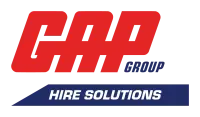genericSection
DE_Software Hero section-New
Digital & App Innovation.
Lösen Sie Probleme, bieten Sie neue Erfahrungen und begeistern Sie Ihre Benutzer.

Page Hero Base
False
genericSection
DE_Software Page Value proposition section
DE_ValueProp - Software engineering
Softwareentwicklung.
Full-Stack-Engineering-Talent, um Ihre Softwareprodukte, Projekte und Teams zu optimieren.
Wir arbeiten mit Ihnen zusammen, um den Raum für technische Lösungen effizient zu erkunden, und bringen neue Perspektiven und Erfahrungen in den Bereichen Wert, Risiko, Daten, UX, Prozesse und Bereitstellung ein, die Ihr internes Fachwissen ergänzen.

False
DE_ValueProp - Software modernisation
Software-Modernisierung.
Erschließen Sie geschäftlichen Nutzen mit Cloud-nativen Funktionen und moderner Architektur.
Wir helfen Ihnen dabei, veraltete, schwer zu wartende Apps neu zu gestalten und in moderne, plattformübergreifende, Cloud-native, skalierbare und leistungsstarke Lösungen umzuwandeln.

False
DE_ValueProp - Software Integration & automation
Integration & Automatisierung.
Optimieren Sie schnell Prozesse und Datenflüsse für tiefere, intelligentere Transaktionen und Beziehungen.
Wir helfen Ihnen dabei, ein differenziertes, lebendiges und kohärentes Ökosystem aus Erlebnissen und Interaktionen so einfach und effektiv wie möglich aufzubauen.

False
Value Proposition
False
Left
genericSection
DE_Software - Other services we offer
Entdecken Sie unsere anderen Dienstleistungen.
Wir helfen Ihnen beim Aufbau neuer Geschäftsmöglichkeiten, die auf den richtigen Beziehungen zwischen Daten, Software und Plattform basieren.
DE_Other services we offer > Data & AI
Daten & KI
Verstehen, priorisieren und beschleunigen Sie die Aktivitäten, die Ihrem Unternehmen den größten Mehrwert bringen.


False
DE_Other services we offer > Cloud
Cloud
Nutzen Sie die Leistungsfähigkeit des Microsoft Azure-Ökosystems.


False
Mission And Values Services
False
White
genericSection
Empty-Space_White_LINKED
Empty Space
False
White
Unsere Kunden
Ascent arbeitet mit über 150 Unternehmen im DACH-Raum, Großbritannien und den USA zusammen. Von globalen Versicherungen, Banken über Gesundheitswesen und Retail bis hin zu Big Tech und Weltraumforschung – wir arbeiten mit einigen der klügsten Köpfe in den innovativsten Unternehmen zusammen.
genericSection
Empty-Space_White_LINKED
Empty Space
False
White
genericSection
DE_ECB Sponsor - Image only
Single Image
False
White
genericSection
DE_Lets get started section - Main Software Pg
Let’s get started
Wir helfen unseren Kunden, bahnbrechende Produkte zu entwickeln, wichtige Daten- und Softwareprojekte durchzuführen und starke interne Teams aufzubauen. Sie stehen vor einer Herausforderung?
Wir sind bereit, wenn Sie es sind.

Get In Touch
False









































